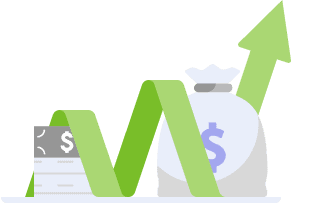Cash Flow in Real Estate: Overview, Definition & Calculations

To reap riches, investors must capitalize on real estate opportunities reaping the biggest rewards. The real estate market is competitive, and there are millions of successful real https://www.instagram.com/bookstime_inc estate investors vying for the same rental properties in the hottest real estate markets. To beat your competition, have the right forethought in identifying real estate gems before everyone else. To do this, you must stay on a steep learning curve and keep up with housing market and economic conditions. It takes work and dedication to become a real estate expert and a mogul in this business. With all this said, almost anyone can start investing in real estate with little capital, accumulate equity, and gain leverage to buy more rental properties.
Cash Flow Analysis
Cash flows can also be used to assess “cash on cash” returns – another important metric that investors use when analyzing a deal’s potential (and actual) profitability. The cash-on-cash return is calculated as the amount of cash received in a given period divided by cash flow real estate definition the amount of the initial investment. There are some situations when negative cash flow might be palatable to investors. This typically occurs when either a) property renovations are being made; or b) during periods of tenant turnover.

Commercial Real Estate Investing: How To Get Started
For buy-and-hold real estate investors, cash flow is the primary lever used to increase income. To understand the tax benefits that real estate investors receive, we’ll need to go back and calculate our net cash flow. That’s because two of the expenses we used to determine our net cash flow – CapEx contributions and the principal part of the mortgage payment – aren’t treated as expenses by the IRS. Cash flows are reported on a cash flow statement, which is a standard financial statement that shows a company’s cash sources and use over a specified period.

What Is Real Estate Cash Flow: An Investor’s Guide
- This typically occurs when either a) property renovations are being made; or b) during periods of tenant turnover.
- Net Operating Income and Cash Flow Before Taxes are the more specific terms used.
- This investment is crucial when planning and budgeting for your property’s capital expenditures.
- As this section describes, there are a number of ways that commercial real estate investors can increase cash flow.
- If a property is profitable, the lenders also use this figure to determine the amount they are willing to lend.
At an apartment building, for example, this could include parking revenue, pet fees, laundry fees, storage locker fees, and more. Cash flow and the metrics used to track it can help you determine whether a particular investment is a good one before you purchase a property. Continue examining your cash flow for metrics such as cash-on-cash return, internal rate of return, and equity multiples to get the most out of your property. This can be a helpful guideline https://www.bookstime.com/ to avoid the time, effort and research needed to evaluate cash flow metrics. However, it doesn’t include other important factors, such as the rental market, cost of living and average incomes in the area around your property.
This can be done by acquiring an under-performing property (where current rents are lower than market demand) and aligning the lease to market rent. Or you can renovate a property, add new amenities (central AC, dishwasher, etc.), and improve cosmetic finishes to bump up rent. Sometimes when a tenant moves out, there will be repairs/cleaning you’ll have to take care of beyond what their security deposit covers. Get instant access to all of our current and past commercial real estate deals. Cash flow refers to the amount of money moving into and out of a company, while revenue represents the income the company earns on the sales of its products and services.

Cash Flows From Investing (CFI)
Market rents and debt service have the most impact on real estate cash flow. Multifamily properties generally create the most cash flow because you have several units in one property, therefore multiple income streams. These typically have lower vacancy rates and spread maintenance costs over many tenants, making them much more profitable overall. Short-term rentals within heavily tourist-demand areas may also provide significant cash flow during peak seasons.
